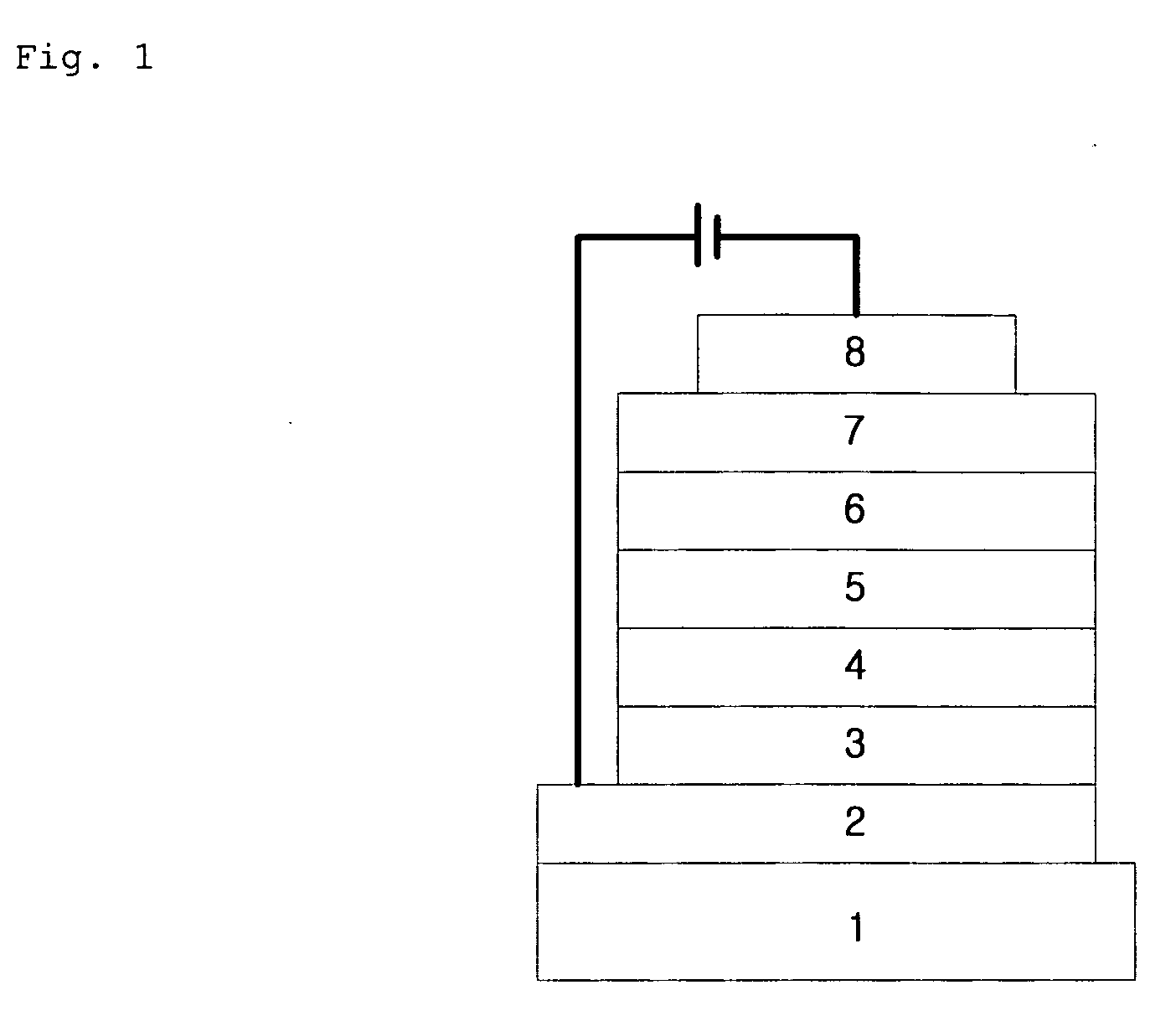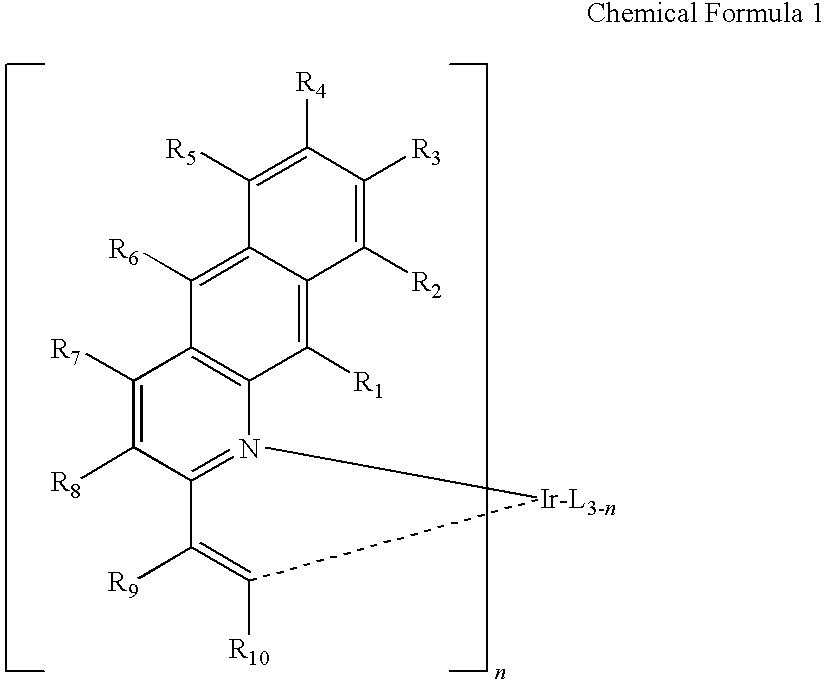Novel organic electroluminescent compounds and organic electroluminescent device using the same
- Summary
- Abstract
- Description
- Claims
- Application Information
AI Technical Summary
Benefits of technology
Problems solved by technology
Method used
Image
Examples
preparation examples
Preparation Example 1
Preparation of Compound (I)
[0135]
[0136]Preparation of Compound (A)
[0137]To ethanol (100 mL), added were 2-aminonaphthalene-3-aldehyde (5.0 g, 29.2 mmol), acetophenone (4.1 mL, 35.1 mmol), potassium hydroxide (3.3 g, 58.4 mmol), and the mixture was stirred under reflux under argon atmosphere. When the reaction was completed, the reaction mixture was cooled to room temperature. After adding aqueous ammonium hydroxide solution thereto, the resultant mixture was extracted with chloromethane. The extract was filtered under reduced pressure. Purification via column chromatography gave Compound (A) (4.8 g, 64%).
[0138]Preparation of Compound (B)
[0139]Compound (A) (4.0 g, 15.7 mmol) and iridium chloride (2.1 g, 7.1 mmol) were dissolved in 2-ethoxyethanol (38 mL) and distilled water (13 mL), and the solution was stirred under reflux under argon atmosphere for 24 hours. When the reaction was completed, the reaction mixture was cooled to room temperature. The solid produced...
example 1
Manufacture of an OLED (1)
[0143]An OLED device was manufactured by using a red phosphorescent compound according to the invention.
[0144]First, a transparent electrode ITO thin film (15Ω / □) (2) prepared from glass for OLED (produced by Samsung Corning) (1) was subjected to ultrasonic washing with trichloroethylene, acetone, ethanol and distilled water, sequentially, and stored in isopropanol before use.
[0145]Then, an ITO substrate was equipped in a substrate folder of a vacuum vapor-deposit device, and 4,4′,4″-tris(N,N-(2-naphthyl)-phenylamino)triphenylamine (2-TNATA) was placed in a cell of the vacuum vapor-deposit device, which was then ventilated up to 10−6 torr of vacuum in the chamber. Electric current was applied to the cell to evaporate 2-TNATA, thereby providing vapor-deposit of a hole injection layer (3) having 60 nm of thickness on the ITO substrate.
[0146]Then, to another cell of the vacuum vapor-deposit device, charged was N,N′-bis(α-naphthyl)-N,N′-diphenyl-4,4′-diamine (N...
example 2
Manufacture of an OLED (2)
[0149]An hole injection layer and a hole transport layer were formed according to the procedure of Example 1, and an electroluminescent layer was vapor-deposited as follows. In another cell of said vacuum vapor-deposit device, charged was H-5 as an electroluminescent host material, and an red phosphorescent compound (Compound 597) according to the present invention was charged to still another cell. The two materials were evaporated at different rates to carry out doping to vapor-deposit an electroluminescent layer (5) having 30 nm of thickness on the hole transport layer. The suitable doping concentration is 4 to 10 wt % on the basis of the host. Then, a hole blocking layer, an electron transport layer and an electron injection layer were vapor-deposited according to the same procedure as in Example 1, and then Al cathode was vapor-deposited in a thickness of 150 nm by using another vacuum vapor-deposit device to manufacture an OLED.
PUM
 Login to View More
Login to View More Abstract
Description
Claims
Application Information
 Login to View More
Login to View More - R&D
- Intellectual Property
- Life Sciences
- Materials
- Tech Scout
- Unparalleled Data Quality
- Higher Quality Content
- 60% Fewer Hallucinations
Browse by: Latest US Patents, China's latest patents, Technical Efficacy Thesaurus, Application Domain, Technology Topic, Popular Technical Reports.
© 2025 PatSnap. All rights reserved.Legal|Privacy policy|Modern Slavery Act Transparency Statement|Sitemap|About US| Contact US: help@patsnap.com



